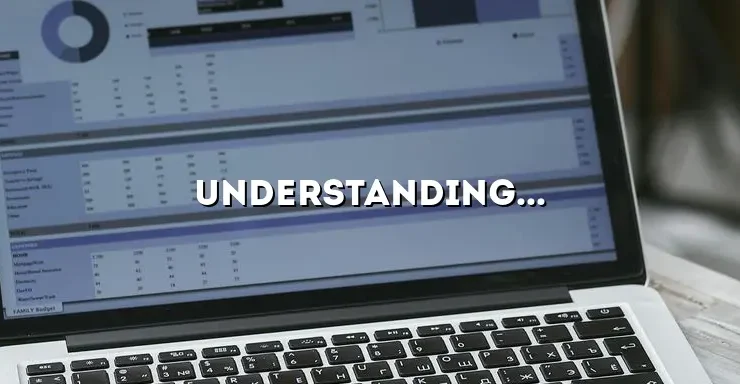
When it comes to undergoing a blepharoplasty procedure, many individuals wonder if their insurance will cover the cost. Blepharoplasty, commonly known as eyelid surgery, is a cosmetic surgery that aims to improve the appearance of the eyelids. However, in certain cases, it can also be performed for medical reasons, such as addressing vision problems caused by drooping eyelids. In this article, we will delve into the topic of whether insurance covers blepharoplasty, and explore the factors that come into play.
Understanding the coverage provided by insurance companies for cosmetic surgery procedures can be a complex and confusing process. Insurance policies differ in terms of what they consider medically necessary and what they deem as purely cosmetic. Therefore, it is crucial to have a clear understanding of your insurance policy and its specific coverage guidelines. Let us now explore the various factors that insurance providers typically consider when deciding whether to cover blepharoplasty.
Medical Necessity
Insurance coverage for blepharoplasty often depends on whether the procedure is deemed medically necessary. Insurance companies generally consider medical necessity when there are functional problems caused by the eyelids. For example, if drooping eyelids obstruct your vision and impair your ability to perform daily activities, insurance may be more likely to cover the surgery. It is essential to provide comprehensive documentation to support your case, including reports from an ophthalmologist or optometrist that highlight the visual impairment caused by your drooping eyelids.
Visual Impairment and Documented Symptoms
Insurance companies typically require documented symptoms to justify the medical necessity of blepharoplasty. Visual impairment is one of the primary symptoms that insurance providers look for. If your drooping eyelids significantly obstruct your vision, resulting in difficulty in reading, driving, or performing other visual tasks, your chances of insurance coverage may increase. It is crucial to have thorough documentation from your eye care professional, including visual field testing and visual acuity measurements, to substantiate the impact of your drooping eyelids on your vision.
In addition to visual impairment, other symptoms such as eye fatigue, discomfort, or physical limitations caused by drooping eyelids can also support the case for medical necessity. These symptoms may affect your quality of life and hinder your ability to engage in everyday activities. Providing a detailed account of the impact these symptoms have on your daily life can strengthen your claim for insurance coverage.
Functional Limitations and Impaired Activities
Insurance companies consider the functional limitations caused by drooping eyelids to determine the medical necessity of blepharoplasty. If your eyelids significantly obstruct your field of vision, making it challenging to perform essential tasks such as reading, driving, or even recognizing faces, insurance providers may view the surgery as medically necessary. It is important to provide evidence of how your drooping eyelids restrict your activities and impair your quality of life. This can include specific instances where you faced difficulties due to your eyelid condition and how it affected your ability to work or engage in social activities.
Prior Authorization
Prior authorization is a crucial step in the insurance coverage process for blepharoplasty. Many insurance companies require prior authorization to confirm that the procedure is medically necessary and meets their coverage criteria. It is essential to consult with your insurance provider to understand their specific requirements and procedures for obtaining prior authorization. Failure to obtain prior authorization may result in your claim being denied, leaving you responsible for the entire cost of the surgery. Therefore, it is vital to familiarize yourself with your insurance plan’s guidelines and follow the necessary steps to ensure coverage.
Consultation with Your Insurance Provider
When considering blepharoplasty, it is highly recommended to consult with your insurance provider directly. Contacting your insurance company allows you to understand their specific coverage policies and guidelines for blepharoplasty. This consultation will help you determine whether your procedure may be covered and what steps you need to take to maximize your chances of approval. Your insurance provider can provide you with information regarding the required documentation, prior authorization process, and any additional steps you need to follow to initiate the coverage process.
Understanding Coverage Criteria
Each insurance plan has its own coverage criteria for blepharoplasty. Familiarize yourself with your insurance policy and carefully review the coverage guidelines related to cosmetic surgeries. Some insurance plans may have specific criteria that need to be met for a procedure to be considered medically necessary. For example, they may require a certain degree of visual impairment or specific documentation from eye care professionals. Understanding these criteria will help you determine your eligibility for coverage and allow you to gather the necessary documentation to support your claim.
Cosmetic Purposes
While blepharoplasty is primarily considered a cosmetic procedure, there are instances where insurance may provide coverage. It is important to note that insurance coverage for cosmetic purposes is generally rare, and most policies do not cover procedures solely for aesthetic improvement. However, certain circumstances, such as when your drooping eyelids significantly impact your vision or cause discomfort, may warrant both cosmetic and medical considerations. In such cases, insurance providers may cover a portion of the procedure that addresses the functional problems while leaving the cosmetic aspect as an out-of-pocket expense.
Combining Functional and Cosmetic Procedures
In some situations, patients may opt to combine functional and cosmetic procedures during blepharoplasty. For example, if you have both functional limitations due to visual impairment and aesthetic concerns about the appearance of your eyelids, your surgeon may recommend addressing both issues simultaneously. In such cases, insurance coverage may apply to the functional portion of the procedure, while the cosmetic component remains the patient’s responsibility. It is important to discuss these options with your surgeon and insurance provider to fully understand the potential coverage and expenses involved.
Out-of-Pocket Costs
In cases where insurance does not cover blepharoplasty, you may need to bear the costs yourself. Understanding the potential out-of-pocket expenses associated with the procedure is essential for making an informed decision. The total cost of blepharoplasty can vary depending on factors such as the surgeon’s experience, geographic location, and the specific techniques used. It is advisable to obtain detailed cost estimates from multiple surgeons and consider factors such as post-operative care, follow-up visits, and any potential complications that may require additional expenses. By thoroughly understanding the financial implications, you can plan accordingly and make an informed decision regarding the affordability of the procedure.
Financing Options
If you are concerned about the out-of-pocket costs of blepharoplasty, various financing options are available to help manage the expenses. Some surgeons offer in-house financing or payment plans that allow you to spread the cost over a period of time. Additionally, third-party financing companies specialize in medical procedures and offer flexible payment options. It is important to research and explore these financing options to find one that suits your needs and financial situation. Remember to carefully review the terms and conditions, interest rates, and repayment plans before committing to any financing arrangement.
In conclusion, whether insurance covers blepharoplasty depends on various factors, including medical necessity, documented symptoms, and your insurance plan’s specific guidelines. It is crucial to thoroughly review your insurance policy, consult with your provider, and gather comprehensive documentation to support your case. Prior authorization is essential to ensure coverage, and understanding your insurance plan’s coverage criteria is important for determining your eligibility. While cosmetic purposes are generally not covered, there may be instances where functional limitations warrant insurance coverage. If insurance does not cover the surgery, it is important to consider the potential out-of-pocket costs involved and explore financing options if necessary. By understanding these aspects, you can make an informed decision about pursuing blepharoplasty and exploring the best options for your specific situation.






